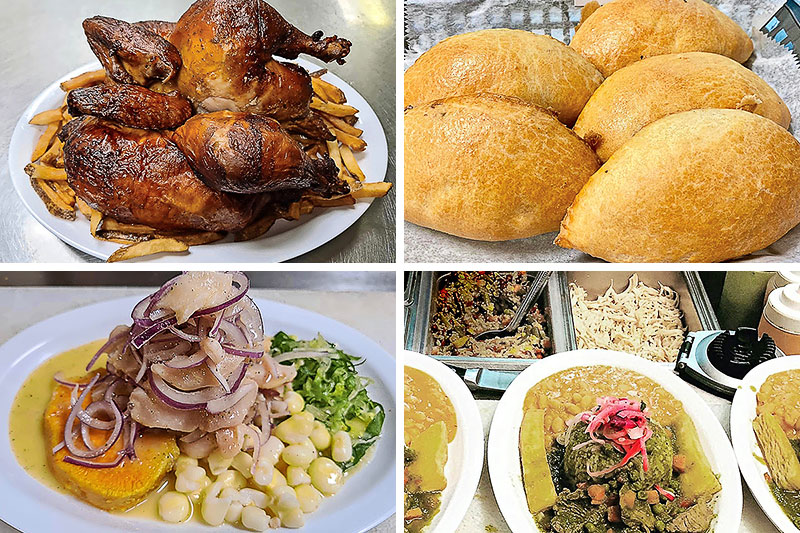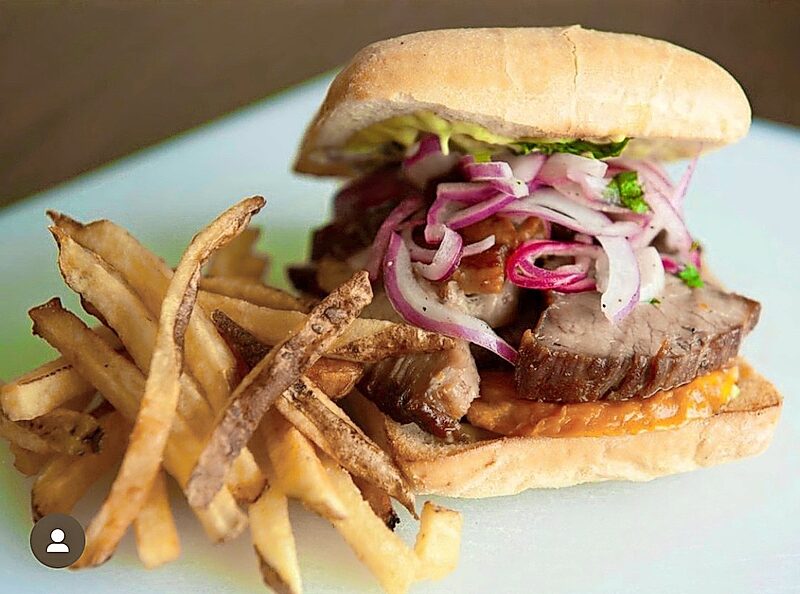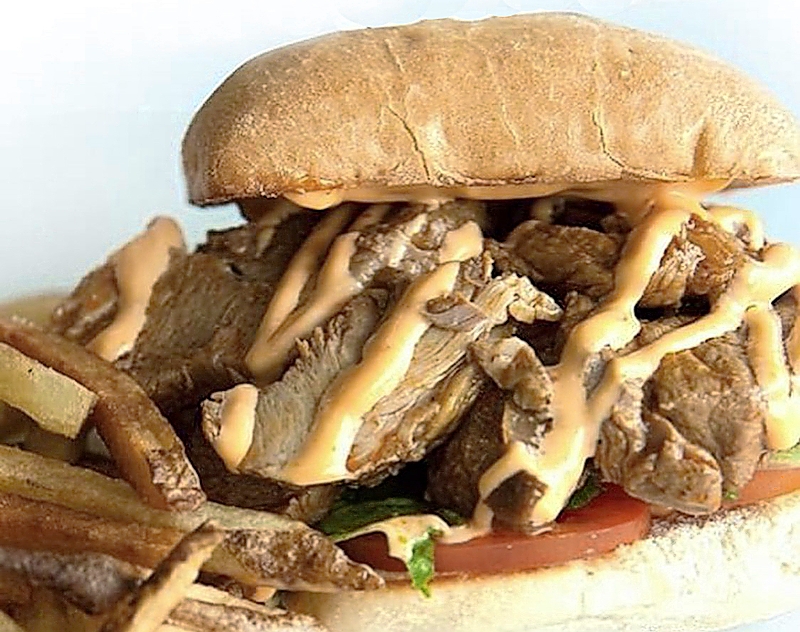Peru on a Plate
By Naperville Magazine
March 2023 View more Table for Two
By Phil Vettel
SanguCHE elevates Peruvian street food

One doesn’t expect to find a Cordon Bleu-trained chef slinging sandwiches in a strip mall in western Naperville, but that’s where Cesar Chang, chef/owner of SanguCHE, has been cranking out delicious Peruvian sandwiches, and other treats, for eight years.
SanguCHE may be a bit tricky to find, but it’s no stranger to area dining fans. It won last year’s Best of Naperville survey in the Mexican/Latin category. It also won in 2019, and in 2017 placed first in the Ethnic category.
Not bad for a place with only a two-cook crew, no liquor license, and a menu that only occasionally departs from sandwiches.
Chang, who received his culinary training in Lima, Peru, came to this country and got his first job working at a Benihana. “That was many years ago,” he says. “But I always wanted my own restaurant.”
Lucky for the region that Chang’s dream came true. His Peruvian cooking defies easy comparison, but his complexly seasoned food is approachable and unfailingly tasty.
SanguCHE’s dining area is simplicity itself, a no-frills space brightened by a few colorful posters. There’s seating for maybe 40 at various wood tables and chairs; Chang estimates that around half his customers choose carryout.

Dine in or carryout, you place your order at the counter and find a seat; in a few minutes your food will arrive, on plates or in a bag. A wide chalkboard above the kitchen lists the various sandwiches and sides available. An “ask if we have” section lists more elusive, limited-supply goodies; chief among these is the ceviche, which Cesar only prepares in late spring and summer—the best time to obtain mahi-mahi, Chang’s fish of choice. I haven’t had the chance to try the ceviche, but based on Chang’s other dishes, I’m marking my calendar.
Peruvian cuisine is a melting pot created by centuries of immigration that brought the country influences from Japan, China, Spain, Italy, Africa, and the Middle East. That’s a lot of territory to cover, but Chang, for the most part, focuses on Peruvian street food, which of course relies heavily on sanguches, or sandwiches. (Chang’s best dish is not a sandwich, though. More on that later.)
The specifics vary, of course, but in general, Chang’s sandwiches begin with slow-cooked proteins matched to seasoned sauces and spices. Chile paste, garlic, cumin, oregano, and cilantro are common flavorings.
For the most part, your protein choices are beef, pork, and chicken. Beef sandwiches are lomo saltado, featuring garlic-sauteed sirloin strips with grilled onions and aji panca (Peruvian red pepper), and seco de carne, a sandwich with beef, peas, carrots, garlic, onion, cilantro, and bell pepper (think pot roast on a French roll). Chicken sandwiches include the Milanesa (breaded and fried chicken breast with cabbage, parsley mayonnaise, and sesame-oil dressing) and pollo ambulante, featuring shredded chicken with a creamy black-olive aioli with lettuce and tomatoes.
My favorite sandwiches are pork-based. The Butifarra sandwich takes stewed slices of jamon del pais (country ham), richly flavored with achiote and cumin, and serves it with parsley mayo and salsa criollo (Creole sauce, a Peruvian staple). Adobo de cerdo combines stewed pork shoulder (seasoned with cumin, oregano, and aji panca) on a ciabatta roll with lettuce and tomatoes.
Sandwiches come with shoestring fries (good, but too thick to be legitimately shoestrings), tasty yuca fries, or (for a modest upcharge) a quinoa and mixed-beans salad. The starches are fine, but for my money, the quinoa salad is by far the better option.
Because they’re street food, the sanguches aren’t huge; Chang offers them in regular and large sizes (about a $3 to $4 difference), so if you’re very hungry, or sharing one, go big.
If you’re avoiding bread, order the Peru poutine (choice of protein over fries with huancaine—yellow pepper—sauce) or the plato del jefe (chef’s platter), with a choice of meat over white rice (white rice is a staple for Peruvians.)

I mentioned earlier that the best thing on SanguCHE’s menu isn’t a sandwich. That honor belongs to the pollo a la brasa (roasted chicken). This is a magnificent bird, oven-roasted to produce a lacquered, mahogany-colored finish. Marinated for at least 24 hours in a blend of chilies, garlic, and cumin, the chicken is moist and loaded with flavor. I usually avoid chicken skin because it contains so much cholesterol, but the crisp, aggressively seasoned skin on this bird was irresistible.
“The market is not that big,” says Chang about his chicken, noting he sells only four or so birds per week. “I wish I could do more.”
Frankly, I think he should be selling at least a dozen orders per week. Give one a try; it’ll be one of the best chickens you’ve ever had.
The pollo a la brasa must be ordered two hours in advance and costs $28, but it’s a good-sized bird; that, and a couple of empanadas, fed me and two friends with a little bit left over. The empanadas, by the way, are also terrific (found on the “ask if we have” part of the menu, so not always available). These are baked empanadas (as opposed to fried), offering delicate, flaky crusts stuffed with chicken (ground) or beef (chopped).
While there’s not much in the way of desserts on the menu, for some quick sweet bites, the alfajores—shortbread sandwich cookies with caramel fillings—are delicious add-ons (three for $7).
One more thing: Although SanguCHE readily accepts credit cards, its point-of-sale system curiously doesn’t provide an opportunity to add a gratuity. There is a tip jar on the counter, so consider bringing a little cash when you visit.
Photos courtesy of SanguCHE


